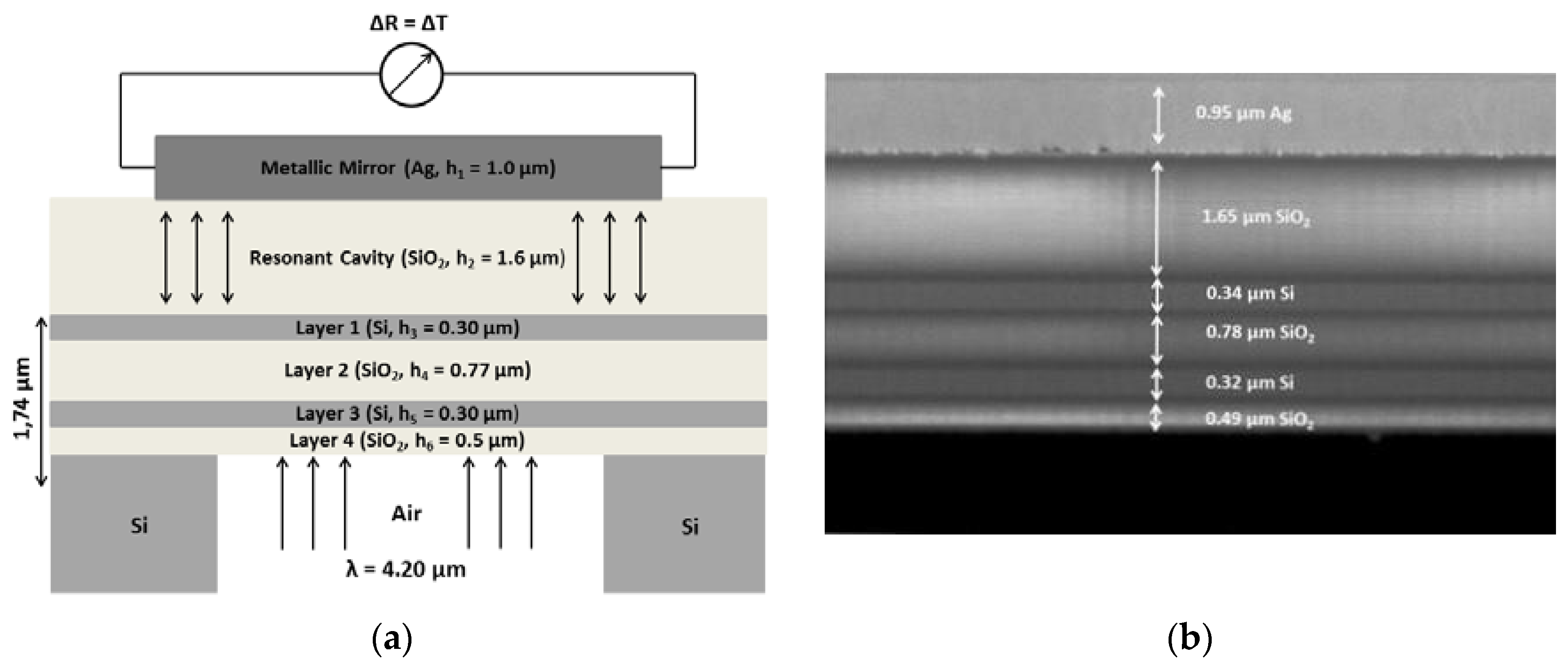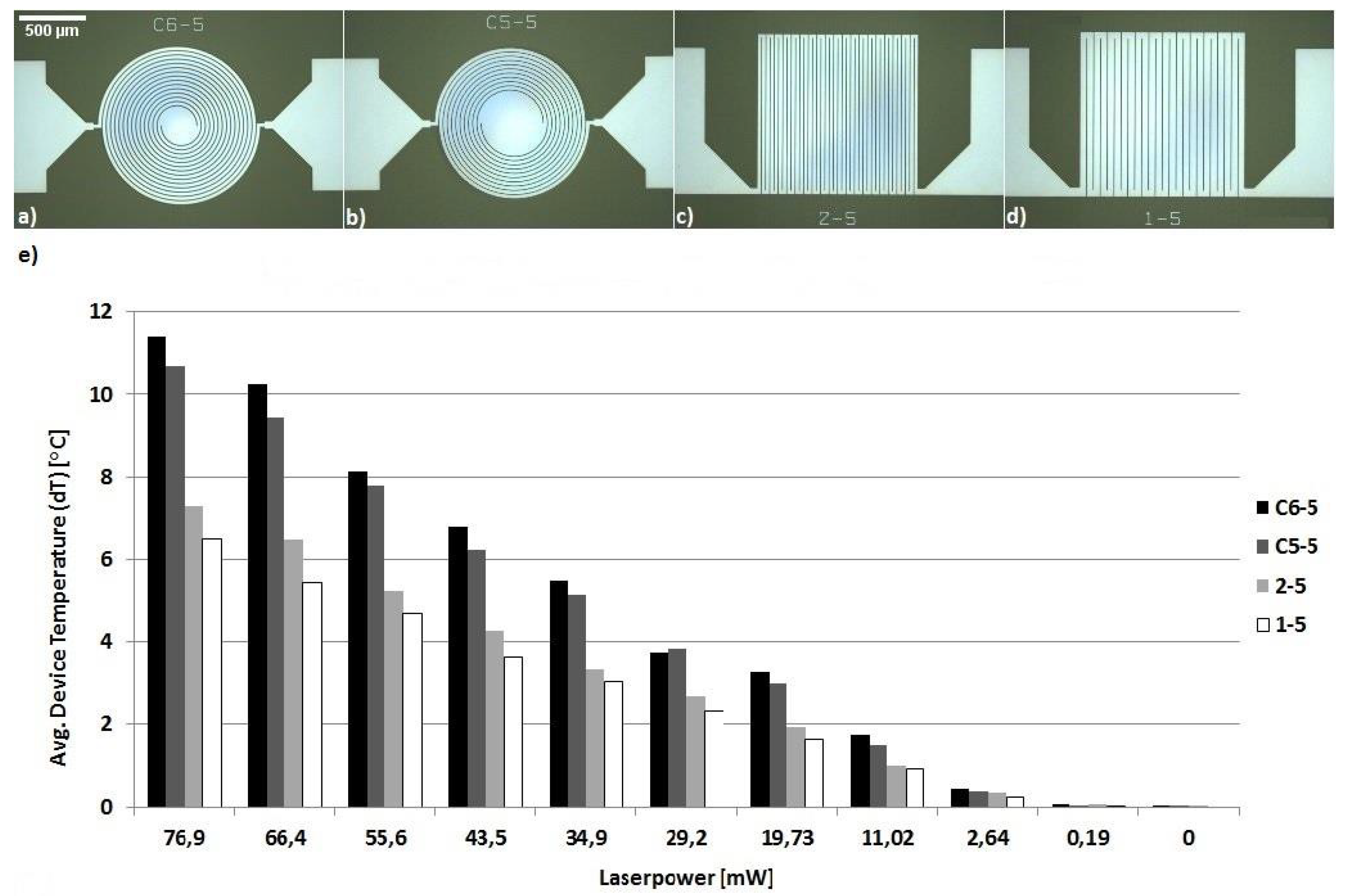Characterization of a Vertical-Cavity Enhanced Detector for Narrowband Detection in the Mid-Infrared †
Abstract
:1. Introduction
2. Methods
3. Results and Discussion
4. Conclusions
Acknowledgments
References
- Ranacher, C.; Consani, C.; Hedenig, U.; Grille, T.; Lavchiev, V.; Jakoby, B. A Photonic Silicon Waveguide Gas Sensor Using Evanescent-Wave Absorption. IEEE Sens. 2016. [Google Scholar] [CrossRef]
- Okamoto, K. Fundamentals of Optical Waveguides; Academic Press: Cambridge, MA, USA, 2010. [Google Scholar]
- Michaelian, H. Photoacoustic Infrared Spectroscopy; Wiley: Hoboken, NJ, USA, 2003. [Google Scholar]
- Celanovic, I.; Perreault, D.; Kassakian, J. Resonant-cavity enhanced thermal emission. Phys. Rev. B 2005, 72, 075127. [Google Scholar] [CrossRef]
- Söllradl, T.; Ranacher, C.; Consani, C.; Pühringer, G.; Lodha, S.; Jakoby, B.; Grille, T. Characterisation of a Resonant-Cavity Enhanced Thermal Emitter for the Mid-Infrared. IEEE Sens. 2017, 1–3. [Google Scholar] [CrossRef]



Publisher’s Note: MDPI stays neutral with regard to jurisdictional claims in published maps and institutional affiliations. |
© 2019 by the authors. Licensee MDPI, Basel, Switzerland. This article is an open access article distributed under the terms and conditions of the Creative Commons Attribution (CC BY) license (https://creativecommons.org/licenses/by/4.0/).
Share and Cite
Rauter, L.; Consani, C.; Söllradl, T.; Pühringer, G.; Lodha, S.; Grille, T.; Jakoby, B. Characterization of a Vertical-Cavity Enhanced Detector for Narrowband Detection in the Mid-Infrared. Proceedings 2018, 2, 728. https://doi.org/10.3390/proceedings2130728
Rauter L, Consani C, Söllradl T, Pühringer G, Lodha S, Grille T, Jakoby B. Characterization of a Vertical-Cavity Enhanced Detector for Narrowband Detection in the Mid-Infrared. Proceedings. 2018; 2(13):728. https://doi.org/10.3390/proceedings2130728
Chicago/Turabian StyleRauter, Lukas, Cristina Consani, Thomas Söllradl, Gerald Pühringer, Surabhi Lodha, Thomas Grille, and Bernhard Jakoby. 2018. "Characterization of a Vertical-Cavity Enhanced Detector for Narrowband Detection in the Mid-Infrared" Proceedings 2, no. 13: 728. https://doi.org/10.3390/proceedings2130728
APA StyleRauter, L., Consani, C., Söllradl, T., Pühringer, G., Lodha, S., Grille, T., & Jakoby, B. (2018). Characterization of a Vertical-Cavity Enhanced Detector for Narrowband Detection in the Mid-Infrared. Proceedings, 2(13), 728. https://doi.org/10.3390/proceedings2130728



